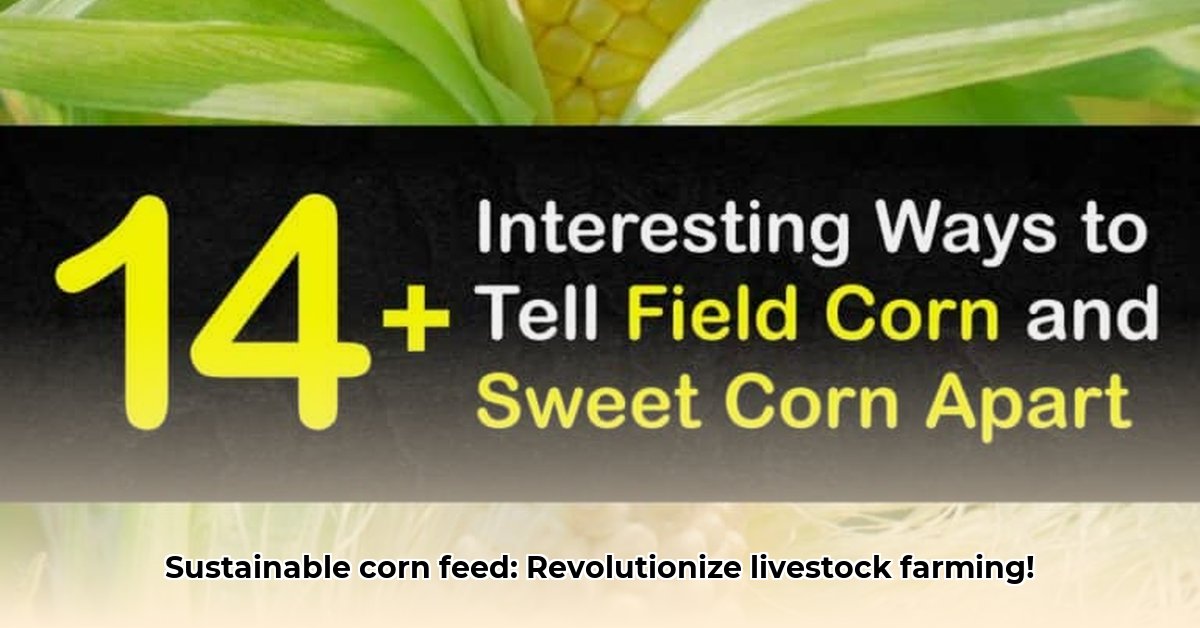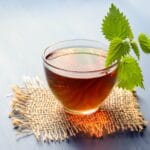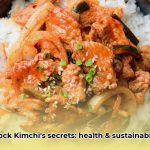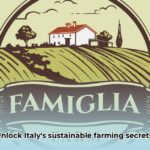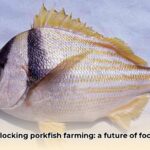Want to raise healthier livestock while being kinder to the planet? Let’s talk about corn. It’s a big part of animal feed, but using it sustainably is key to the future of farming. This article breaks down the good and the bad of feeding livestock whole corn, comparing it to other options, offering precise feeding strategies, and illustrating ways to diminish the environmental impact. We’ll give you practical tips, cost comparisons, and real-world examples to help you boost your production while reducing your environmental footprint. Whether you’re a farmer, feed producer, or just care about where your food comes from, this guide offers valuable insights for a more sustainable approach to livestock farming.
Corn Feed: Boosting Livestock Production Sustainably
Corn is a major component in livestock farming. Its high energy content offers a cost-effective method for increasing animal size and growth speed for animals such as chickens, cows, and pigs. But is a heavy reliance on corn optimal, particularly considering broader ecological health and environmental sustainability? This is a crucial question. The intensive cultivation and transportation of corn also involve significant energy consumption, which contributes to greenhouse gas emissions.
Feeding Our Animals: The Environmental Side of the Story
While corn is readily available and relatively inexpensive, the large-scale cultivation of corn presents certain environmental challenges. Expansive cornfields can displace land that might otherwise serve as wildlife habitats, leading to reduced biodiversity. The cultivation of corn is also water-intensive and can degrade soil quality over time. The use of fertilizers and pesticides poses additional environmental risks, affecting water sources and harming beneficial insects and soil microorganisms. It is important to assess the broader implications for biodiversity, water resource management, and long-term soil health.
Growing Corn Smarter: Sustainable Practices Make a Difference
Many farmers are implementing environmentally friendly corn cultivation methods. Techniques such as no-till farming, crop rotation (alternating corn with nitrogen-fixing crops like soybeans or legumes), and the use of cover crops (such as rye or clover) help to reduce soil erosion, improve soil health, and lessen the environmental impact of corn production. Precision agriculture techniques, utilizing GPS and sensor technologies, allow for targeted application of fertilizers and pesticides, minimizing waste and environmental contamination. The focus is shifting from merely seeking the cheapest option to considering the sustainability of the entire process.
Beyond Corn: More Variety in Animal Diets
For truly sustainable livestock farming, diversifying animal feed is essential. Utilizing alternative protein sources, such as insect meal derived from sustainably farmed insects or algae-based feeds grown in controlled environments, can reduce the demand for corn and alleviate pressure on land resources. Supplementing corn with forages like alfalfa or grass can also improve animal health, reduce reliance on grain, and enhance the nutritional value of meat, eggs, and dairy products. Are we fully capitalizing on such possibilities? Exploring the nutritional profiles and environmental footprints of these alternative feeds is paramount.
Working Together: A Team Effort for Sustainable Corn
Enhancing the sustainability of corn production requires collaborative efforts from various stakeholders. Feed companies, farmers, scientists, policymakers, and consumers must work together to promote better practices and drive significant changes in how we operate. This includes supporting research into sustainable feed alternatives, implementing policies that incentivize environmentally responsible farming, and informing consumers about the environmental impact of their food choices. The goal is not to eliminate corn use entirely but to integrate it wisely into a more balanced system.
Steps Toward a Greener Future: What Each of Us Can Do
Here’s how different groups can contribute to more sustainable corn production:
| Stakeholder | Short-Term Actions | Long-Term Actions |
|---|---|---|
| Feed Producers | Source corn from farms that use sustainable practices; explore adding other ingredients, such as algae or insect meal. | Conduct complete environmental assessments of feed production; invest in research and development of sustainable feeds; establish closed-loop systems to minimize waste. |
| Livestock Farmers | Carefully consider the environmental impact of feed choices; include various feed sources; implement rotational grazing. | Adopt precise feeding techniques, using technology to optimize feed delivery; integrate sustainable farming practices, such as agroforestry; reduce food waste through better storage. |
| Consumers | Demand transparency about where feed comes from; support producers committed to sustainability; choose grass-fed or pasture-raised products when possible. | Advocate for policies that promote sustainable livestock farming; reduce overall meat consumption; educate others about sustainable options. |
| Governments/NGOs | Invest in research on sustainable feeds; regulate land use to protect the environment; provide subsidies for sustainable farming practices. | Fund agricultural innovation; establish targets for cutting greenhouse gas emissions from agriculture; implement carbon pricing mechanisms for agricultural emissions. |
Looking Ahead: A Sustainable Corn Future Is Achievable
Achieving sustainable corn production necessitates a collaborative approach grounded in innovation and responsible practices. By adopting innovative technologies, prioritizing responsible farming methods, and collaborating across sectors, we can cultivate a livestock industry that is both prosperous and environmentally conscious. The future of corn and our broader food system depends on our ability to meet these challenges, including adopting a circular economy approach to minimize waste and maximize resource utilization.
How to Compare Environmental Impacts of Whole Corn vs Alternative Livestock Feed
Key Takeaways:
- Corn offers a cost-effective energy source but lacks protein and requires careful management.
- Sorghum provides higher protein, drought resistance, and a reduced environmental impact.
- How to compare environmental impacts of whole corn vs alternative livestock feed requires analyzing water usage, fertilizer needs, pesticide application, transportation distances, and land use changes.
- Choosing the best feed depends on local conditions, herd needs, sustainability goals, and economic factors.
- By-products like corn gluten feed offer circular economy opportunities. Further research is crucial for optimizing alternative feed sources and understanding their long-term sustainability impacts.
Corn’s Role in Beef Cattle Diets: A Balancing Act
Corn’s high energy density makes it an attractive option, mainly when hay is scarce or costly. It serves as a readily accessible energy source, especially for beef cattle, promoting rapid weight gain and efficient finishing. However, corn has low protein content and lacks essential amino acids. Supplementation with protein sources like soybean meal or alfalfa is needed to ensure adequate muscle growth and overall health. This increases the cost and complexity of the feeding process, potentially offsetting some of the economic benefits of using corn.
Sorghum: A Sustainable Alternative?
Sorghum is a drought-tolerant grain that presents a compelling alternative, particularly in arid and semi-arid regions. It offers higher protein levels than corn, reducing the need for supplementary protein. Additionally, its water efficiency and reduced dependence on fertilizers and pesticides make it an environmentally sound choice. Some varieties require processing to improve digestibility, such as cracking or rolling. Tannins in some varieties may also need to be addressed through processing or variety selection.
Evaluating Environmental Impacts: What to Consider
How to compare environmental impacts of whole corn vs alternative livestock feed requires evaluating the whole production process, including water usage (irrigation needs), fertilizer and pesticide usage, energy inputs for processing and transport, land use change (deforestation or habitat conversion), and greenhouse gas emissions. Sorghum often outperforms corn due to its drought resistance and lower input requirements, but a comprehensive life cycle assessment is necessary to fully understand the environmental footprint of each feed option. Consider the impact of transportation. Locally-sourced feed reduces the carbon footprint associated with transportation.
Economic Considerations: A Balancing Act
The economic viability of each feed option is affected by market prices, transportation costs, and potential yield variations. Cost-effectiveness can change from year to year due to weather patterns, global demand, and government policies. Regional differences in land and feed costs also influence financial results. Monitoring market trends and conducting a thorough cost-benefit analysis is essential for profitable livestock production.
A Step-by-Step Guide to Choosing the Right Feed
- Assess local conditions: Evaluate climate, soil, and water availability to find out the suitability of different feed sources.
- Evaluate your herd’s needs: Consider the different nutritional requirements for the various breeds and life stages, including energy, protein, and mineral requirements.
- Analyze feed prices: Compare corn, sorghum, and other options in your region, taking into account transportation costs and potential storage losses.
- Consider environmental impact: Consider the greenhouse gas emissions, the fertilizer and water needs for each choice. Use life cycle assessment tools to estimate the environmental footprint of different feed options.
- Pilot test different rations: Slowly introduce alternative feeds while monitoring animal health and performance, paying close attention to weight gain, feed conversion efficiency, and any signs of digestive upset.
- Adjust your strategy as needed: Change your approach based on market prices, herd needs, and environmental considerations. Regularly evaluate the performance of your feed strategy and make adjustments as necessary to optimize profitability and sustainability.
Moving Towards Sustainable Practices
The optimal feed strategy balances economic viability and environmental sustainability. Focus on optimizing animal health and profitability while reducing the ecological footprint of livestock farming. This includes exploring innovative feed technologies, adopting precision feeding strategies, and supporting policies that promote sustainable agriculture.
Sustainable Corn Feed Alternatives for Poultry Production
Key Takeaways:
- Conventional poultry feed, heavily reliant on corn and soy, is expensive and environmentally damaging.
- Sustainable corn feed alternatives for poultry production offer significant cost savings and environmental benefits, reducing reliance on monoculture farming.
- Insect meal and Azolla are promising protein sources. Agro-industrial byproducts (like rice bran) provide energy. Seaweed is another alternative that offers essential minerals.
- Challenges include inconsistent NCFS nutritional value, potential for mycotoxin contamination, and optimal inclusion
